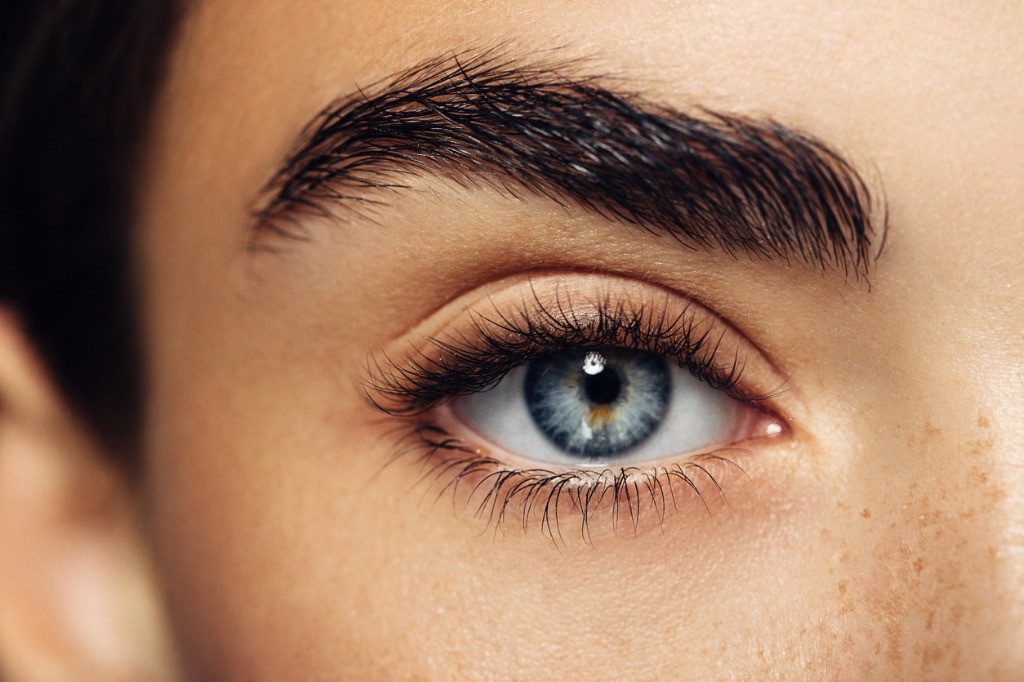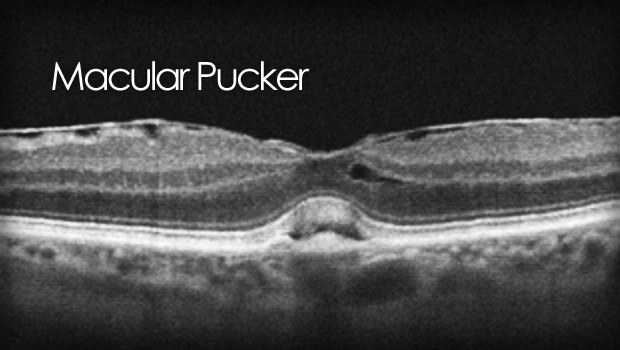
Macular pucker exercises typically include focusing drills and amsler grid monitoring. These techniques may help manage symptoms and monitor vision changes.
Dealing with a macular pucker can be challenging, and exercising the eyes is one strategy among several management options. A macular pucker, also known as an epiretinal membrane, is a condition where a thin, clear layer of scar tissue forms over the macula, the part of the retina responsible for sharp, central vision.
Engaging in certain eye exercises, such as focusing exercises and utilizing an Amsler grid, can help individuals with this condition maintain their current level of vision and identify any worsening in their sight. The Amsler grid, a simple checkerboard-like pattern, is especially useful for monitoring changes in vision, which is crucial for tracking the progression of a macular pucker. Eye care professionals often recommend these exercises alongside other treatment options to help patients cope with the vision distortion caused by this eye condition.

Credit: www.marioneye.com
Identifying Macular Pucker
Macular pucker is an eye condition that affects the macula. The macula is part of the retina and is essential for sharp, central vision. The exercises aim to reduce symptoms. This section will delve into its symptoms and diagnosis, plus the causes and risk factors.
Symptoms And Diagnosis
Understanding the signs of a macular pucker is crucial. Notice any changes in your vision? Take action. Below are the common symptoms:
- Blurred vision: Straight lines that appear wavy
- Distorted central vision: Objects in front of you might look crooked
- Difficulty in reading or doing detailed work due to reduced visual acuity
- Gray or cloudy area in the center of your vision
- Central blind spot may develop
An eye specialist can diagnose this condition. Comprehensive eye exams are necessary. These may include:
- Visual acuity test
- Dilated eye exam
- Optical coherence tomography (OCT)
Causes And Risk Factors
The exact cause of a macular pucker is not always known. However, certain factors increase the risk. Knowledge of these can lead to earlier detection and management.
| Cause/Risk Factor | Description |
|---|---|
| Age | Common in people over 50 |
| Eye injury | Injury to the eye can lead to scar tissue formation |
| Eye surgery | Previous surgeries can result in epiretinal membrane formation |
| Eye conditions | Conditions like diabetic retinopathy or retinal detachment |
Other factors include eye inflammation and myopia. Stay alert to changes in your vision. Early detection can help manage the macular pucker condition better.

Credit: maculacenter.com
Impact On Vision
Macular Pucker can greatly affect how you see the world. Exercises may help, but it’s important to understand the impact on your vision first. This condition can change the way you do everyday things. Let’s dive into how Macular Pucker can cause distortion and blurriness, and its impact on daily activities.
Distortion And Blurriness
A Macular Pucker can make straight lines look wavy. A grid might appear with some bent lines. This is called distortion. Things may also look blurry. Text on a page might not seem clear. These changes can be startling.
- Vision distortion can affect reading.
- Blurriness may make details hard to see.
- Recognizing faces becomes a challenge.
Severity And Daily Activities
The severity of a Macular Pucker can vary. It influences daily tasks in different ways. A table below shows common activities and potential impacts.
| Activity | Possible Impact |
|---|---|
| Driving | Difficulty in judging distances. |
| Using Digital Devices | Text appears blurred, causing strain. |
| Household Chores | Problems in seeing fine details. |
| Sports and Hobbies | Challenges in visual precision. |
Less severe cases might not disrupt much. More serious cases could affect work and hobbies. Sometimes, the changes might make it harder to feel secure when moving around.
Treatment Options
Macular pucker can blur your vision. It makes straight lines look wavy. You might also have trouble seeing details. You can treat it, though. Options range from eye drops to surgery. Here’s what you need to know about treatment choices for macular pucker.
Surgical Interventions
Surgery might improve your sight. The main surgery is called vitrectomy. It removes wrinkled tissue from your eye. Let’s explore:
- Vitrectomy: This is the main surgery to fix a macular pucker.
- Recovery: You will need some weeks to recover.
- Risks: All surgeries have risks, like infection or bleeding.
The surgeon takes out the vitreous. This is the gel in the middle of your eye. Then, they peel off the wrinkled tissue. After, they add a bubble of gas or air. Your body makes new vitreous to replace this bubble.
Non-surgical Alternatives
Not all patients need surgery. Some might get better with other treatments. These are gentler on your eyes. Here are some non-surgical ways:
- Eye Drops: Medicine in drops can lower swelling.
- Monitoring: Sometimes, keeping an eye on the issue is enough.
- Optical Devices: Tools like magnifying glasses help you see better.
It’s important to talk with your doctor. They will tell you the best choice for your eyes. Sometimes, a macular pucker stops getting worse. Then, you might just need to check your eyes often. Regular check-ups help keep your vision safe.
Exercises For Macular Pucker
Exercises for Macular Pucker can help improve vision for those affected by this eye condition. These exercises do not cure but can enhance visual acuity and comfort. Regular practice under professional supervision often yields the best results. Let’s explore some targeted exercises for those experiencing Macular Pucker.
Amsler Grid Technique
One common tool for macular health is the Amsler Grid. This simple check uses a grid pattern to reveal vision distortions or blind spots. People with Macular Pucker should use the grid as follows:
- Place the grid at eye level in a well-lit room.
- Cover one eye, then focus on the center dot with the other.
- Note any distortions or wavy lines.
- Repeat with the opposite eye.
Repeat this exercise daily. Report any changes to your eye doctor immediately.
Vision Therapy Sessions
Vision Therapy often includes personalized exercises to improve visual skills. Professionals use specialized tools and techniques to train your eyes, aiming to enhance visual efficiency. Common therapy involves:
| Exercise | Description | Frequency |
|---|---|---|
| Focus Change | Shifting focus between near and far objects. | Daily |
| Eye Movements | Following patterns to improve tracking. | Several times a week |
| Depth Perception | Using 3D images to enhance depth awareness. | Weekly |
With consistent practice, these exercises can lead to improved visual outcomes. Always attend therapy sessions as advised by your therapist.
Lifestyle Adjustments
Lifestyle Adjustments play a crucial role in managing macular pucker. These changes can help maintain eye health and support treatment.
Nutrition And Eye Health
Eating for eye health is fundamental for those dealing with macular pucker. A balanced diet rich in vitamins and minerals is essential.
- Leafy greens like spinach and kale are packed with lutein and zeaxanthin.
- Citrus fruits and berries provide vital vitamin C.
- Fish high in omega-3 fatty acids, such as salmon, support retina health.
- Zinc-rich foods like nuts and seeds are also beneficial.
Supplements may also help, but always consult a doctor before starting any new regimen.
Managing Coexisting Conditions
Conditions like diabetes or high blood pressure can affect eye health. Regular check-ups and proper management are key to reducing risks.
| Condition | Action |
|---|---|
| Diabetes | Maintain blood sugar levels |
| High Blood Pressure | Monitor blood pressure regularly |
| Dry Eyes | Use lubricating eye drops as prescribed |
Incorporating regular exercise and stress-reduction techniques such as yoga or meditation can also support overall health, including the eyes.
Monitoring And Regular Check-ups
Keeping watch on eye health is crucial, especially for those with conditions like macular pucker. Such conditions can change over time. Regular check-ups help catch changes early. This ensures the best care for your eyes. Let’s dive into the details of routine exams and when to reach out to your doctor.
Importance Of Routine Eye Exams
Maintaining healthy vision involves more than just updating your glasses or contact lenses. Regular eye exams are key to detecting eye issues like macular pucker early on. These exams often include:
- Visual acuity tests
- Dilated eye exams
- Imaging tests
An eye care professional checks for any changes or issues. This helps manage conditions before they worsen. Make sure to schedule exams yearly or as your doctor advises.
When To Contact Your Eye Doctor
Between routine visits, you may notice symptoms. Do not ignore them. Contact your eye doctor if you experience:
| Symptoms | Action |
|---|---|
| Increased blurriness | Book an appointment |
| Distorted vision | Consult your doctor |
| Shadows or wavy lines | Seek immediate advice |
It could be a sign that your condition is changing. Early detection can help in managing the situation effectively.

Credit: www.naturaleyecare.com
Frequently Asked Questions Of Macular Pucker Exercises
How Can I Improve My Macular Pucker?
To improve a macular pucker, schedule regular visits with an ophthalmologist. They may recommend a vitrectomy to restore vision. Maintain overall eye health by managing underlying conditions like diabetes and avoiding smoking. Protect your eyes with UV-blocking sunglasses when outdoors.
How Do You Treat Macular Pucker Without Surgery?
Treatment for macular pucker without surgery typically involves observation and using aids like glasses or magnifying lenses. Some patients may also benefit from medication to manage associated symptoms. Regular monitoring by an eye care specialist is crucial.
Can Macular Pucker Go Away?
A macular pucker may gradually improve over time, but often remains stable or can worsen. Persistent symptoms may require surgical intervention.
Can Glasses Help Macular Pucker?
Glasses cannot reverse macular pucker, but they may improve vision for some tasks. Consult an eye specialist for personalized advice.
Conclusion
Embarking on exercises for macular pucker can be a game-changer for eye health. Consistent practice may lead to improved vision and comfort. For those affected, remember these movements are allies in maintaining ocular wellness. It’s all about taking small steps towards a clearer tomorrow, one exercise at a time.
Keep focusing on progress and consult your eye specialist regularly.








